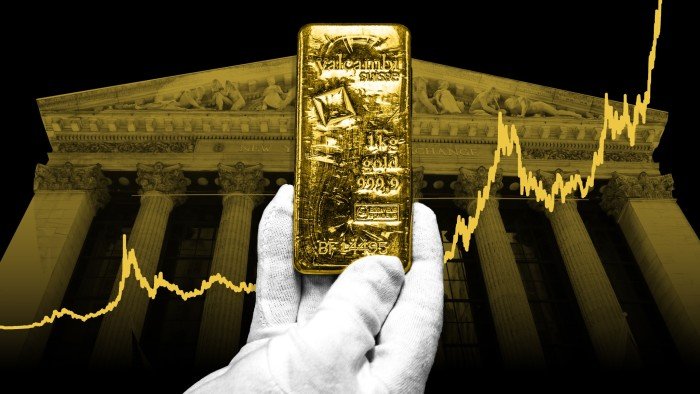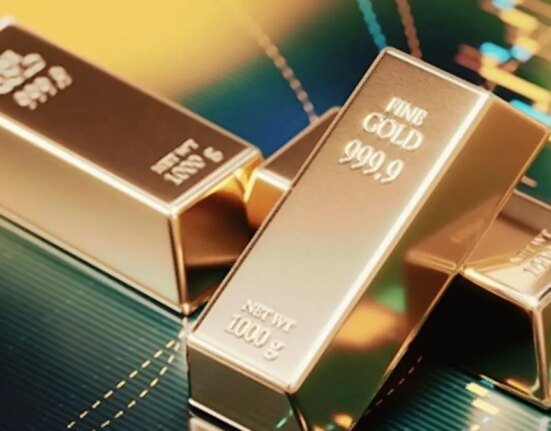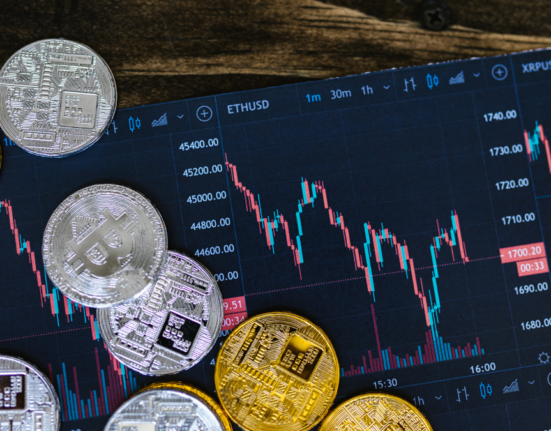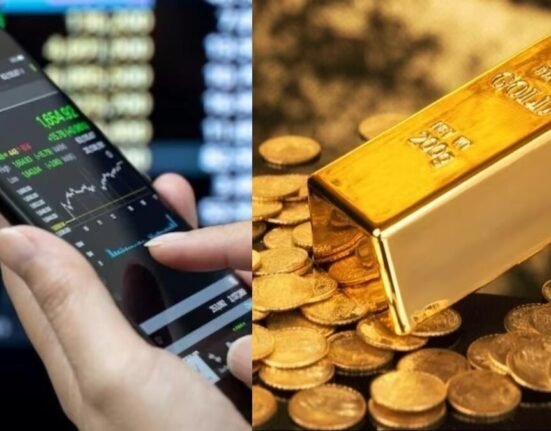John Maynard Keynes once called it a “barbarous relic”, an ancient metal with little relevance in the modern world. When the gold-backed global monetary architecture came to an end in the early 1970s, central banks started selling their holdings — and they continued doing so for decades.
For the guardians of the global economy, gold — which has been used as a store of value since the first gold bars were created in Mesopotamia thousands of years ago — seemed destined for irrelevance.
Yet bullion has made a roaring comeback, not just among speculators and so-called gold bugs who mistrust modern paper currencies, but even among the most conservative investors in the world.
New data released this week showed that gold passed the euro last year to become the world’s second-largest reserve asset among global central banks, following a record buying spree.
In a febrile political era, when many of the core assumptions about the global economy are being questioned, gold has once more become an anchor.
The trade war pursued by US President Donald Trump, combined with rising geopolitical tensions and questions about the long-term role of the US dollar, have all contributed to a blistering gold rally — one that has taken even gold boosters by surprise.
The price of bullion surged to a record intraday high in April in real terms, passing the previous record set in 1980 and has risen about 30 per cent this year. On Friday, as investors reacted to Israel’s attack on Iran, the price approached that record again.
Since Trump took office, promising a “golden age” for America, gold has been the best performer among asset classes including equities, energy and major currencies.
For some investors, gold never lost its role as one of the global financial system’s ultimate safe havens. Even so, the recent rally stands out for its sheer ferocity, particularly at a time when high-tech competitors such as bitcoin — labelled “digital gold” by cryptocurrency enthusiasts — are also on the march.
“People often say bitcoin is the new gold. I say, ‘No, gold is the new gold,’” quips Kenneth Rogoff, a Harvard professor and former chief economist of the IMF.
As gold rose past $3,000 per troy ounce this year, traders were reminded of previous market shocks. Bullion passed $1,000 in the 2008 global financial crisis and went through $2,000 during the Covid-19 pandemic.
“Gold is the ultimate confusion trade,” says Luca Paolini, chief strategist at Pictet Asset Management, “the thing to have when everything seems wobbly.”
Unlike other financial assets, gold has no counterparty risk, and it is difficult for government to place sanctions on it. In extremis, you can bury it in your backyard.
As investors question the health of the dollar, still the de facto reserve currency, and the outlook for US government bonds, the world’s traditional haven asset is having its day.
The key reason for gold’s rally? “It’s Trump, in a word,” says John Reade, chief market strategist at the World Gold Council. “It’s the risk and uncertainty from the new US administration.”
Gold has been front and centre in a flight to safety that has reshaped global markets at the outset of Trump’s second term.
Investors have piled into assets such as the precious metal and perceived safe sovereign debt like German Bunds as they seek shelter from the dramatic market fallout that followed the president’s “liberation day” tariffs.
Net inflows into gold-backed exchange traded funds were 322.4 tonnes during the first five months of the year — the highest levels since the pandemic.
But there is a second, crucial, factor. The dollar and US government bonds, which would usually rally on such a global shock, are instead being tested by US policy turbulence.
Commentators have long questioned whether dollar supremacy within the global trade and financial system can continue indefinitely. But Trump presents a stress test. Growing concerns among foreign investors, from potential taxes on investments to questions over Federal Reserve independence, are combining with rising worries over US debt sustainability to spark a sweeping reassessment of exposure to dollar assets.
“Gold’s rise in part reflects the administration’s undermining of the properties underpinning dollar dominance,” says Mark Sobel, a former US Treasury official and US chair of think-tank OMFIF.
The dollar slumped to a three-year low against peers including the pound and the euro this week, and big investors are openly rethinking their dollar exposure.
“Attacking institutions such as the Fed and courts, threatening to add massively to debt and deficits through the ‘big, beautiful bill’, and being an unreliable partner to our allies and partners” have all undercut the dollar’s status, Sobel argues.
Amid a rush into gold among global investors that is extreme even by historical standards, some investors believe the market has become too frothy.
The proportion of fund managers saying gold is now overvalued reached a net 45 per cent in a Bank of America survey last month — a record in data running back to 2008. For the second month running, bets that the gold price would move yet higher were viewed by investors as the “most crowded” trade.
The safe haven buying has added to a rally that was already being stoked by central bank purchases, particularly in emerging markets.
Central banks hold reserve assets as a kind of rainy day fund to see themselves through periods of economic turbulence. Unlike other big investors, they are not looking to invest with assets that provide an outsized return, but rather those that will hold their value in a crisis, and be easy to sell.
For decades, that has been dollar assets given that the $29tn US Treasuries market is the world’s largest and most liquid bond market. But in recent years, central banks’ reserve managers have been working to scale back their dollar exposure.
One key reason cited by experts is the risk to their dollar holdings from US sanctions. A trend of de-dollarisation accelerated in 2022 after Russia’s full-scale invasion of Ukraine. When the US targeted Russia’s access to financial markets, many countries started asking themselves if their US dollar holdings might be vulnerable too.
Central bank net purchases of gold have been more than 1,000 tonnes each year for the past three years — record levels. The biggest growth in purchases has come from emerging-market countries that are not closely aligned with the west, including China, India and Turkey.
“The increasing prominence of gold in central bank reserves and the monetary system reflects the rise of emerging markets,” says Barry Eichengreen, an economic historian at University of California Berkeley.
From a central bank perspective, he argues that the lack of alternatives to the dollar — with options such as the euro constrained by the relative lack of investable assets compared to Treasuries — are driving the move towards bullion. “It is less about the intrinsic merits of gold as a reserve asset than the limitations of the alternatives,” he says.
Central banks’ gold holdings today are nearly on par (in tonnage terms) with the previous peak in 1965, during the Bretton Woods era, although they are still far smaller than they used to be as a percentage of total assets.
“We are starting to approach central bank gold reserves that [are] close to the highest levels ever. For gold to have surpassed the euro, that is really a game-changer,” says Ruth Crowell, chief executive of the London Bullion Market Association.
“I think we are in a new era,” Crowell adds. “Because there is recognition on a broad base, among mainstream investors, of the role that gold plays in times of uncertainty.”
Most investors and economists do not believe gold will replace dollar holdings as the foremost reserve asset, given the greenback’s centrality to the global financial and trade system and its greater liquidity.
Gold, in comparison, has physical drawbacks. These were underscored at the start of the year, when fears of US tariffs led to a record surge of physical gold into New York as traders raced to get ahead of potential import levies. The ensuing transatlantic scramble triggered a weeks-long queue to withdraw gold from the vaults at the Bank of England, the world’s second-largest repository, because bank staff could not meet the surge in requests.
Those fears have now eased, as Trump has made it clear that tariffs will not be applied to bullion.
James Steel, chief precious metals analyst at HSBC, views gold’s comeback as a “grand portfolio shift”, where possibly some central banks “are derating the level of dollars they have, but not moving out of them”.
Concerns about rising government borrowing in the US and elsewhere are also fuelling the gold rush. With Trump’s budget bill set to add to $2.4tn to US debt levels over the next decade, some investors fear a crisis that debases traditional currencies.
Today’s fiscal largesse feels like vindication for those who believe the world should not have moved away from the gold standard. Such profligacy, they argue, is intrinsic to fiat currencies that can be printed at will.
“We need to have an apolitical store of value, that is not subject to political influence,” says Randy Smallwood, chief executive of Wheaton Precious Metals, a mining royalty company, who sees gold’s resurgence as a “back to the future” moment.
“It wouldn’t surprise me if, in 20 years, when you take an economics course, there will be a discussion about the 60-year experiment from 1970 to 2030 on fiat currencies, and how it failed.”
But economists point out that countries had good reasons to move away from a monetary regime that exacerbated economic pain during the 1930s Depression — in part by making it harder for countries to increase their money supply to support economic activity. Linking currencies to physical gold was often a source of volatility rather than stability, they argue, partly because it constrained the actions of central banks and governments.
Yet even those investors who think the record run in gold prices will be difficult to sustain still advocate it as a hedge. “Gold will not outperform as much as in the recent past, but it is worth having at almost any price in a global multi-asset portfolio,” says Pictet’s Paolini.
That suggests gold’s central allure, as a port in a storm, is still strong.
“Gold is a ‘comfort metal’,” says Smallwood. “People seek comfort whenever there is stress, and there is a lot of stress around the world right now.”
Data visualisation by Ray Douglas











